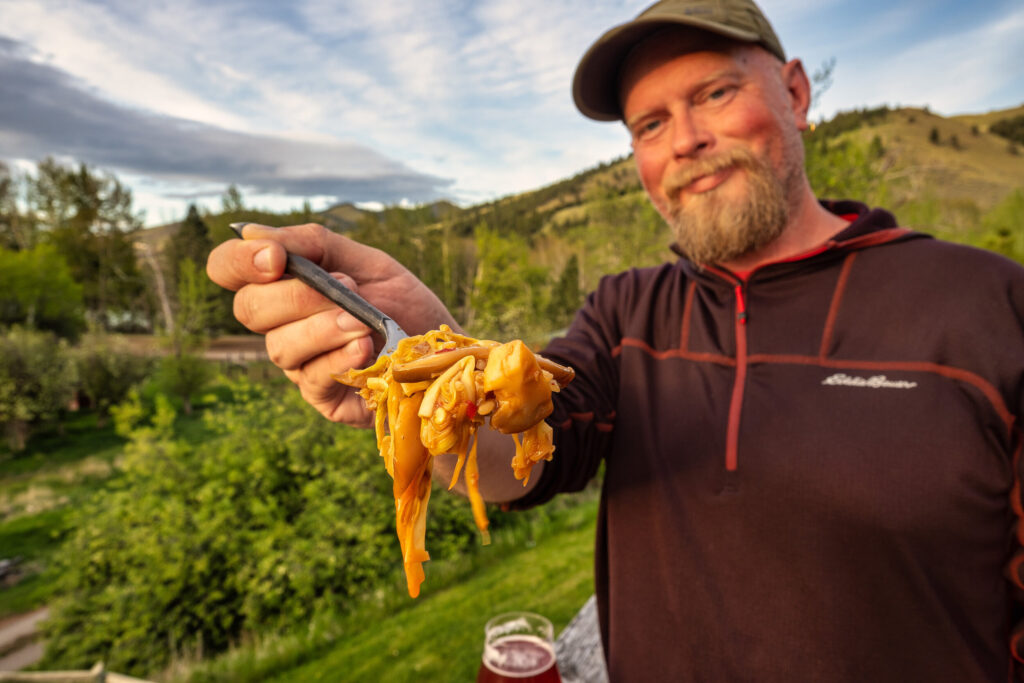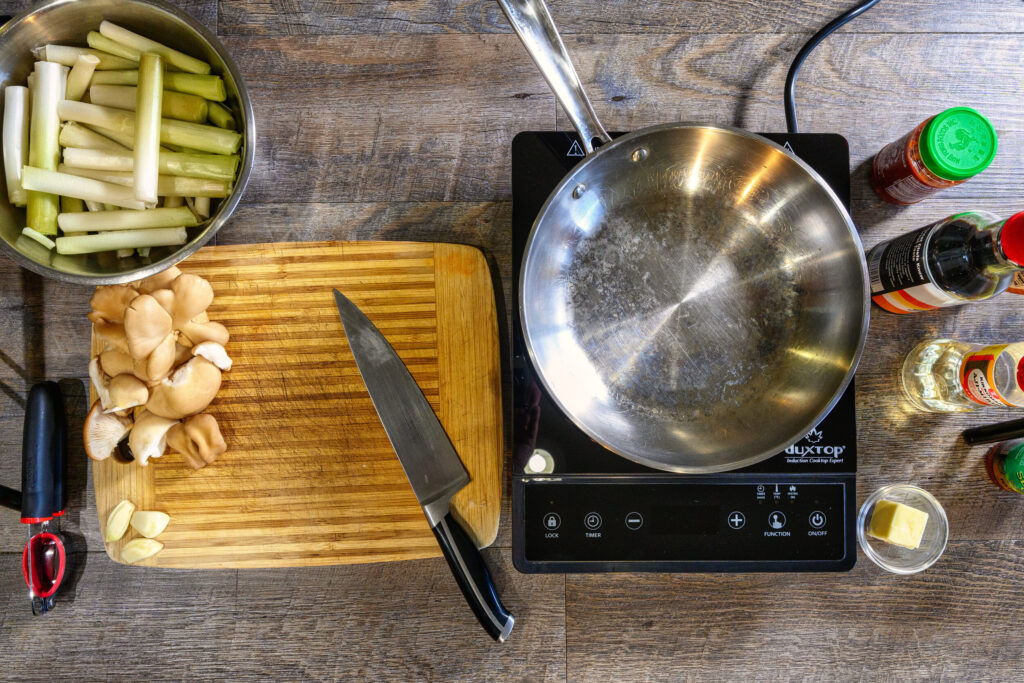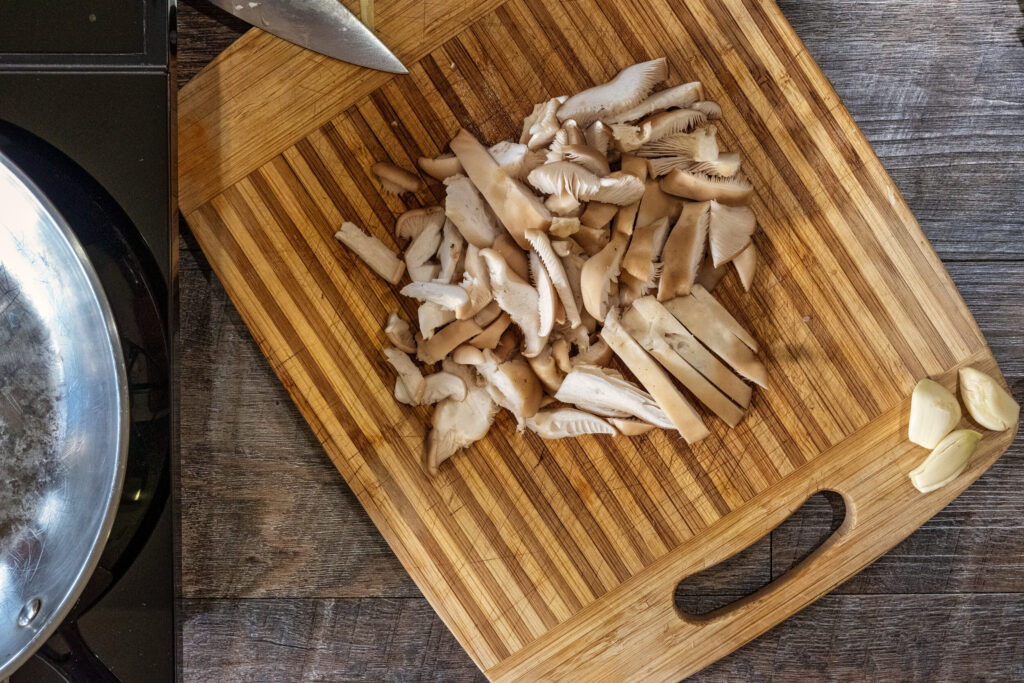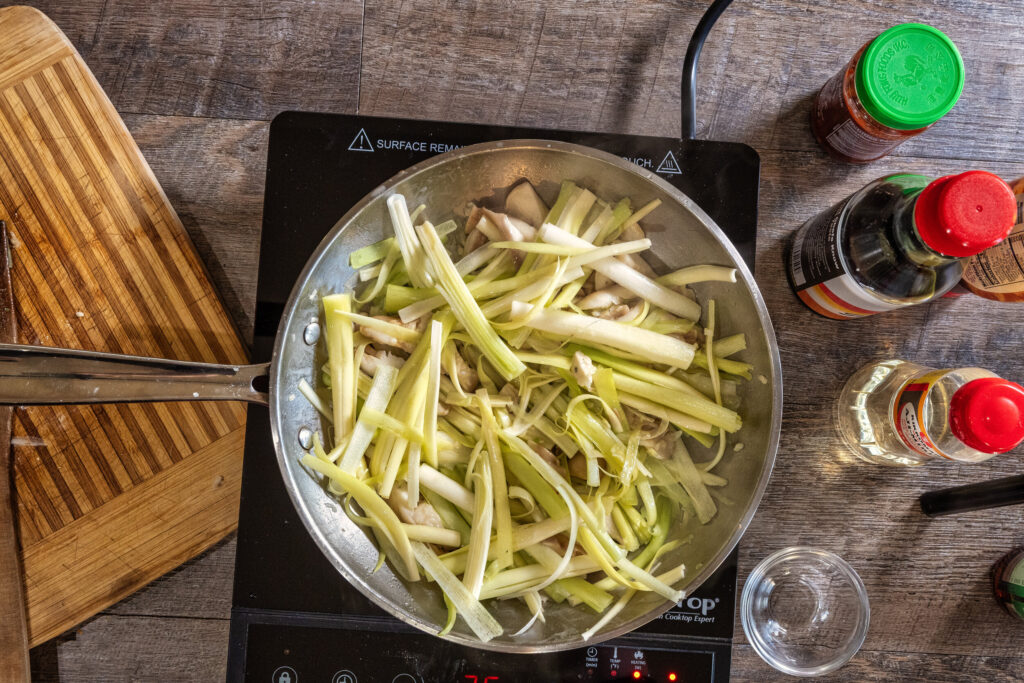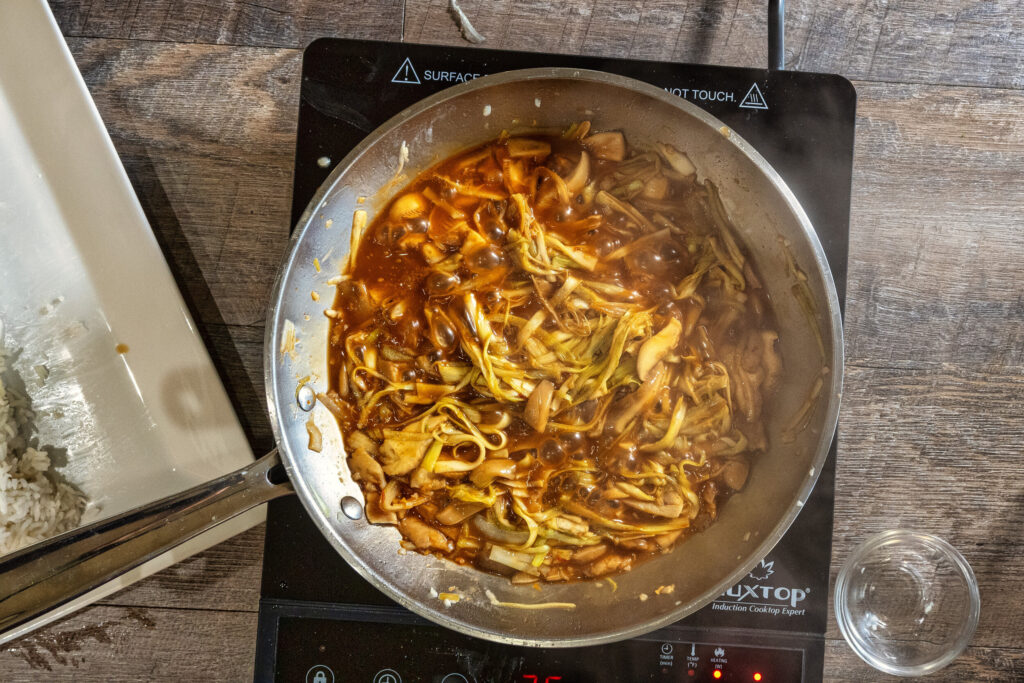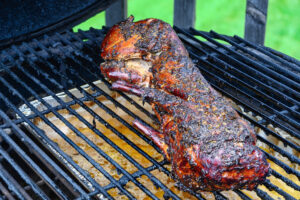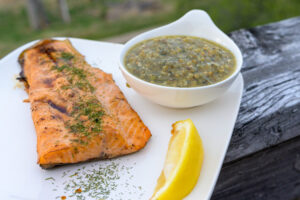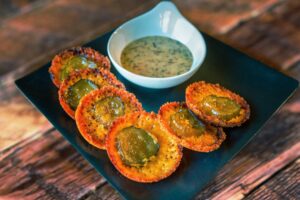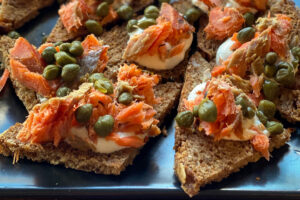Cattail Hearts and Wild Oyster Mushrooms
Foraged
,Sides
,Wild Food
April 13, 2023
The air smelled like Bayou Teche when it’s spring and the fish are spawning among the water hyacinths and the frogs are throbbing in the cattails and flooded cypress.”
— James Lee Burke
Cattail, also known as “corn dog grass”, named for its elongated seed heads that resemble the tails of cats, is primarily found in the Northern Hemisphere growing on the margins of lakes and wetlands. This marsh plant is sometimes classified as a weed because of its ability to quickly take over new habitats and stop the development of native plant species, however, despite the negative press, cattail plays an important role in the wild.
Underwater cattails provide a safe haven for small fish and attract smaller aquatic creatures that birds and other wildlife feed on. The rhizomes and lower leaf portions of cattails are consumed by muskrats, ducks, and geese, and in the thick clusters of leaves red-winged blackbirds nest. Cattails are great for biodiversity and serve as a source of shelter and food for various birds, mammals, as well as humans, who have used them for building materials, medicine, and food.
Fluff (cottony hairs) from seed heads can be used for the filling of life jackets, pillows, and mattresses, or utilized as an insulating material in buildings. The same fluff could be used in the treatment of sores, and skin burns, while the plant’s rhizomes can accelerate wound healing. The roots and leaves aren’t without their use either and could benefit the treatment of stomach cramps.
If that wasn’t enough application for a seemingly simple plant, the cattail rhizomes contain more starch than potatoes, more proteins than rice, and could be ground into flour, boiled, and used raw as a vegetable in the human diet. The yellow pollen, which appears mid-summer, can be added to pancakes for added nutrients.
The flower spikes and cattail heads can be boiled and roasted like corn on the cob. The cattail heart, the interior part of the stem, is sterile and can be eaten raw. Just peel off those exposed layers on the outside ‘till you get to the heart of the stem and the lower parts of the leaves.
Today’s sustainable wild harvest or ‘survival dinner’, depending on how you look at it, utilizes the cattail heart’s best harvest in spring and early summer prior to the development of the flower stalk. However, Cattail is a macrophyte and accumulates heavy metals perfect for toxic cleanup, so for eating purposes stay the hell away from the ones that receive drainage from roads, industrial places, manufacturing companies, or anything that looks dubious. Look for a spring-fed pond far away from traffic and people. It may be hard to tug on the shoots, so bring your Chacos to prepare yourself to get muddy feet, which in our opinion is half the fun.
Gathering wild foods, preparing them, and then placing them on your dinner table is oddly gratifying. You don’t become one with Earth, but you do become allies with a satisfying sense of cooperation and appreciation. It all feels so very “natural”.
Once you foraged your food, peeled, and washed the cattail hearts go ahead and soak them in a tub of vinegar water, if you are still apprehensive about food safety.
Now we’re ready to eat. Even though cattail hearts could be eaten raw, we prefer to cook ours for improved taste and to kill off any disease-carrying parasites that might have tagged along to our kitchen.
Cattail hearts taste the texture of cooked asparagus, taste like cucumbers, and when cooked in butter in a combination of wild it becomes a pretty decent, tasty, satiating, and unintentional vegetarian meal perfect for a warm summer evening.

Cattail Hearts And Wild Oyster Mushrooms
Ingredients
- 20 cattail hearts cleaned and sliced lengthwise
- ½ lb. oyster mushrooms cleaned and sliced
- ½ TBSP unsalted butter
- 2 cloves garlic minced or pressed
- 2 tsp sesame oil
- Hot sauce to taste (a lot in our case)
- 1 TBSP mirin
- ¼ cup soy sauce
- 1 TBSP chili-garlic sauce
- 2 tsp gochujang
Instructions
- Heat a saucepan over medium-high, and melt the butter
- Add the oyster mushrooms, and sauté for several minutes
- Add the sesame oil and cattail hearts, stirring the mixture. Cook until the cattail hearts become soft.
- Into the pan, add the garlic and cook for 2 minutes
- Add the remaining ingredients, stir and cook until the sauce starts to thicken.
- Serve over rice (maybe, wild rice?)
- Enjoy your wild foraged meal.

